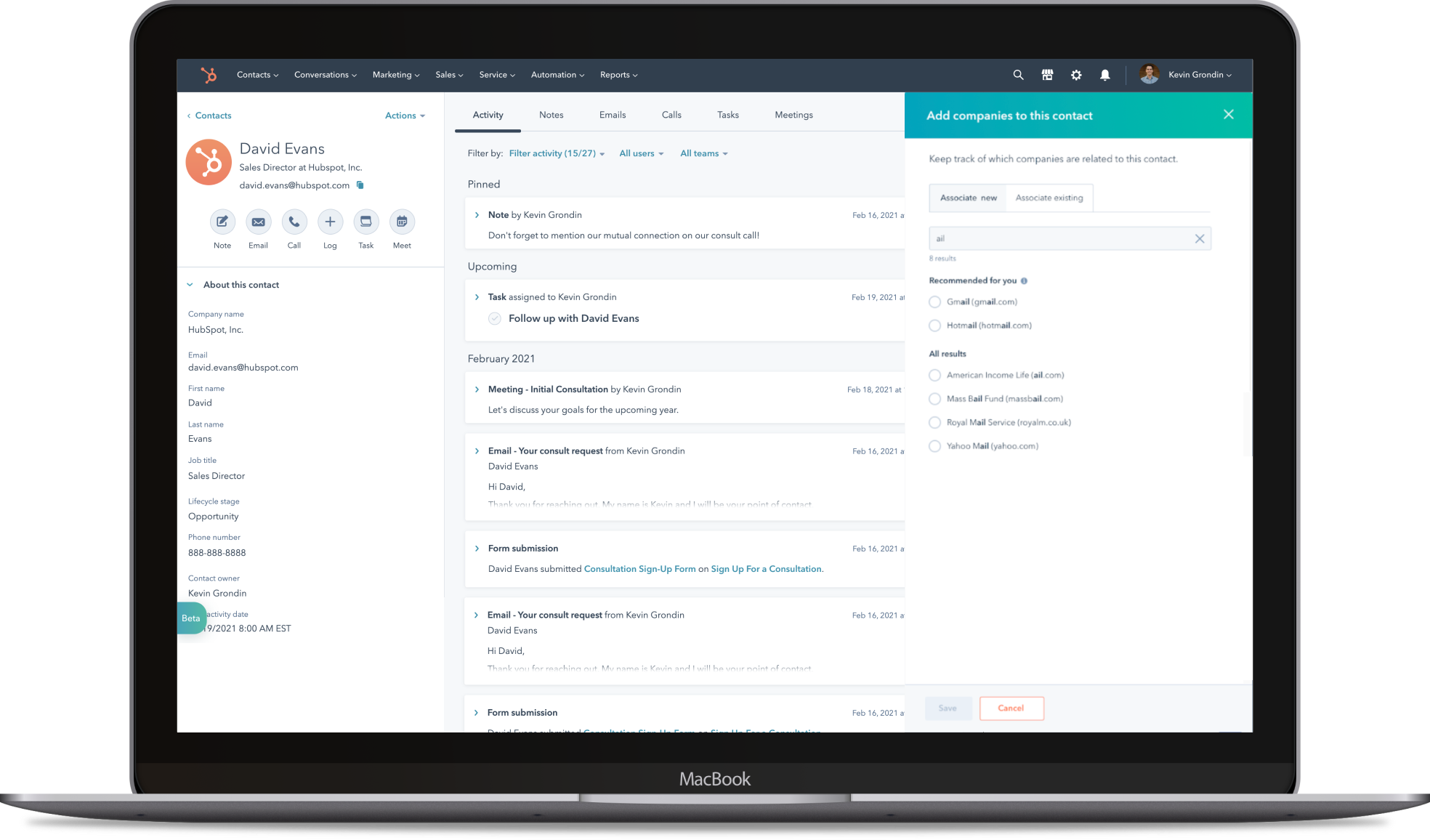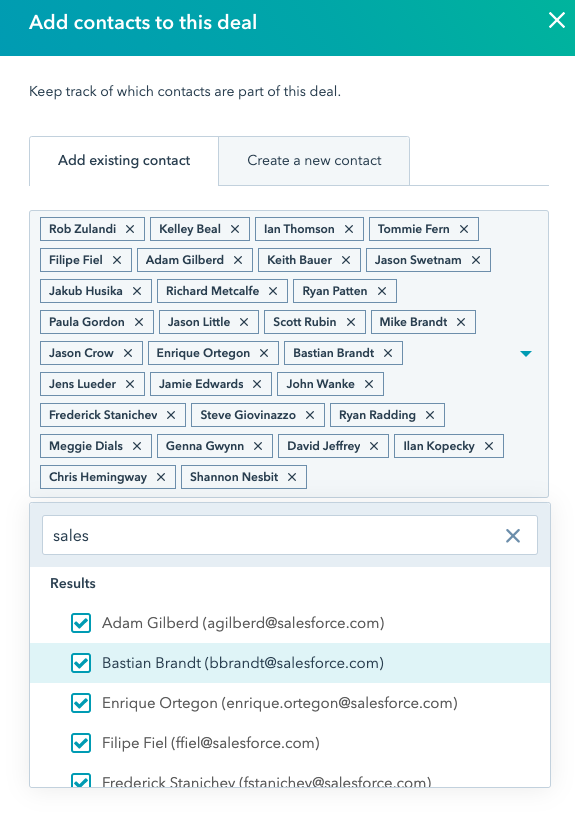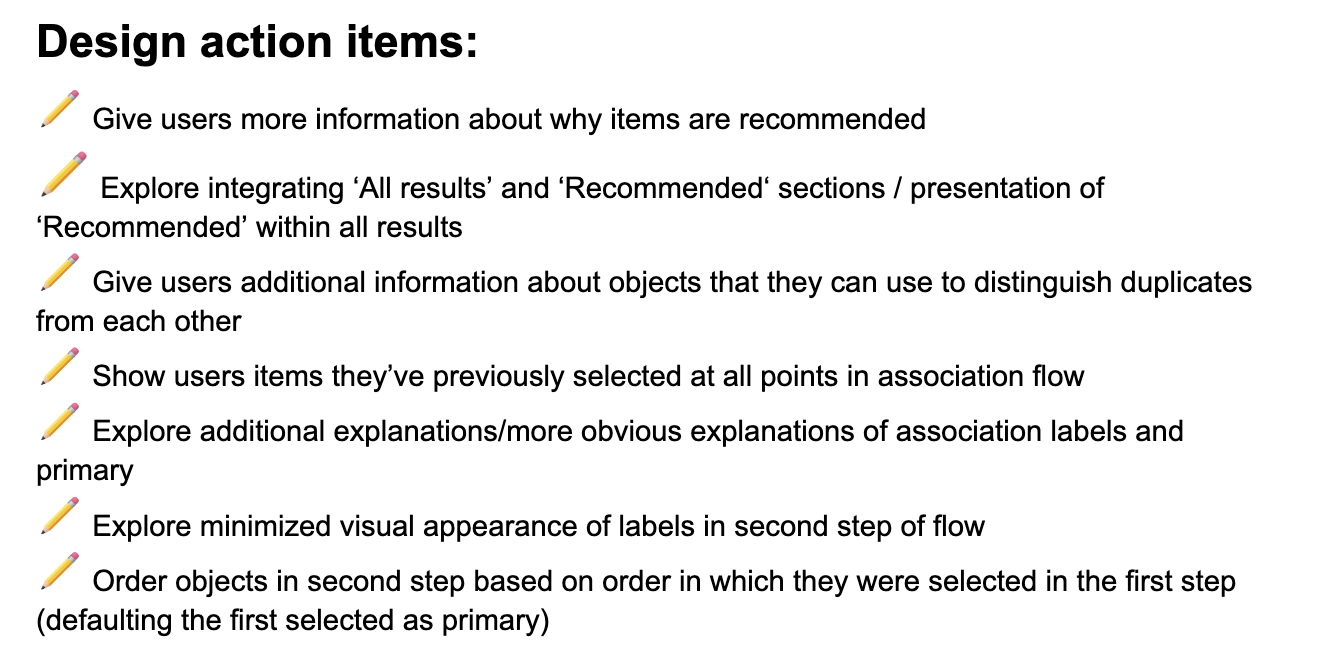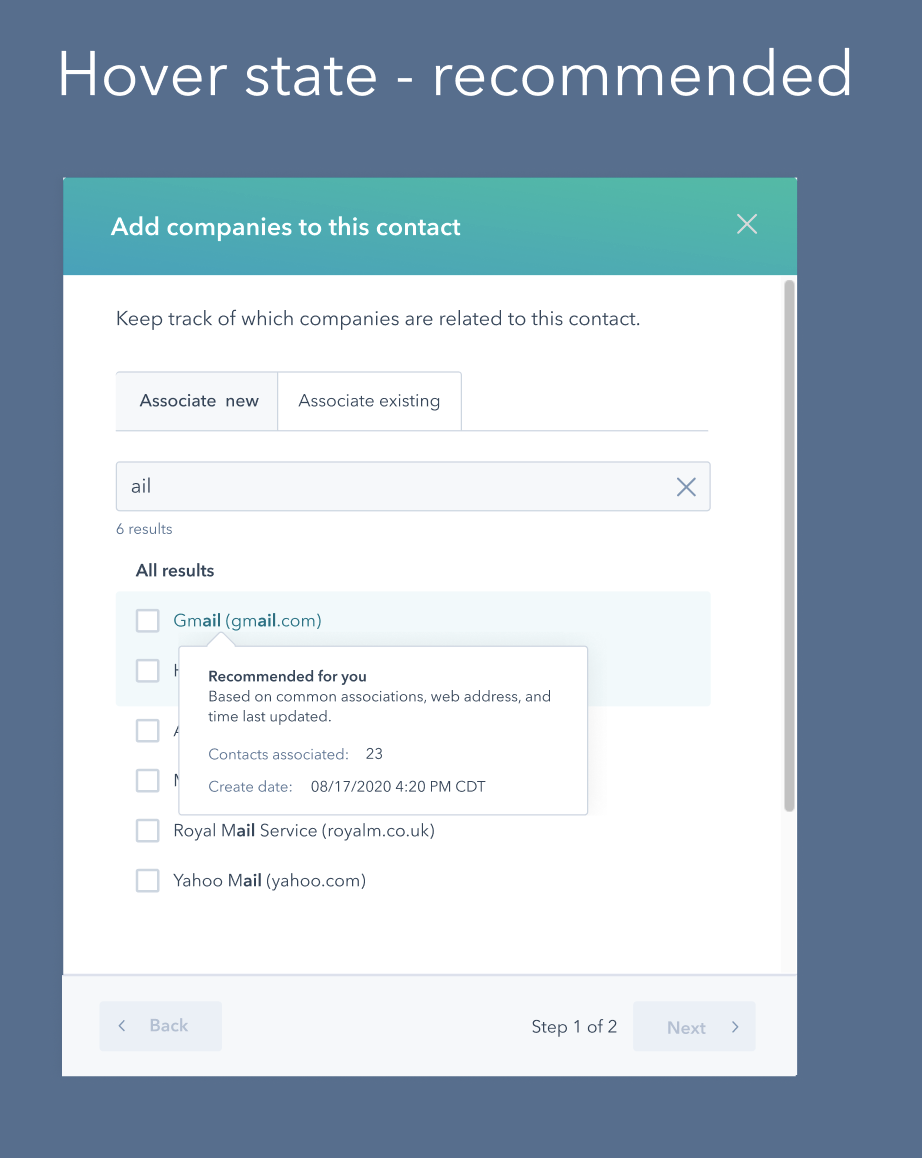Add Existing Object Associator
The object associator on the CRM record page, shown above on the right side panel, is triggered from the association sidebar (obscured here) and allows a user to associate an object that already exists in their HubSpot CRM (contact, company, deal, etc.) to the object represented by the record they’re currently on. In this example, the object associator allows a user to associate/represent a relationship between David Evans, the contact, and a company that has ‘ail’ in its title or web address.
Challenge: Pain points with the original state are:
there is no way to distinguish objects from each other that have the same name
too many clicks are required to associate more than one company to a record (have to agree that you’d like to add an additional company first before re-starting the process)
difficult to see when additional results are available out of viewport
there is too much prominence on adding ‘flexible association’ labels (ex. ‘point of contact’) at this stage given the small percent users who actually use that functionality in its current state (users more typically add labels after associating objects)
Re-evaluating the associate existing object object flow also gave us a chance to:
offer association recommendations so that users don’t need to remember the exact names of companies they’d like to associate and can save time sorting through search results
utilize UX best practices of highlighting the search query within the search results
Solving for: Primarily sales reps, but also support and service reps
Role: Product designer collaborating with CRM record PM and our team’s developers, as well as the HubSpot machine learning team
Success is measured by:
Design
decrease in the time it takes for users to complete associating contacts and deals once the associator panel is triggered
Increased NPS and positive qualitative feedback
Machine learning model
capture rate of desired deal as part of 100 returned deals
Result:
reduced median time to associate an existing record by 10 seconds
users selected offered deal recommendations ~34% of the time
Original version of the object associator shown with many added contacts, for a non-flexible association user.
The following are iterations that went through rounds of feedback with my design and development teams:
Iteration 1
Iteration 2
Iteration 3
Key questions that we had for our users about these designs were:
Are we showing the right secondary properties (closed date/deal amount) to help identify deals apart from their titles?
Should we show any other info on to identify results?
What do users search for deals by (title, involved in the deal, close date, amount)?
What do users need to know about why certain results are recommended? How do users interpret the functionality differently when we call it recommended vs. suggested?
With feedback from my PM Lily, I wrote our research script for our first round of usability testing. Lily and I alternated facilitating each session and taking notes, and I completed the round by compiling results into the below synthesis.
Below is the final design that our team decided to move forward with.
The beta for this functionality without recommendations began on 1/14, and the beta for the recommendation model began on 8/18.
In order to determine significant results, we waited to collect data from 2,000 interactions, from 500 users over 2 weeks.
The final result of this project was a reduced median time to associate an existing record by 10 seconds. We also received positive qualitative feedback from users, and a marked increase in NPS for comments related to this feature.
Additionally, users selected the offered deal recommendations ~34% of the time.





